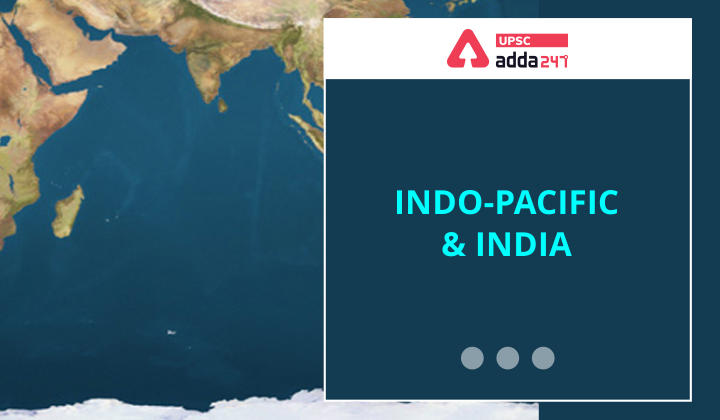G.S. Paper 2: International Relations
Introduction:
The Indo-Pacific region refers to the confluence of the Pacific and Indian Oceans, which interconnect in Southeast Asia.
Context:
Australia, the UK and the US have created a group called AUKUS to take up security challenges in the Indo-Pacific. The plan is to give access to cutting edge military technology to Australia by its two partners, including futuristic capabilities like artificial intelligence and quantum technologies.
Why is the term Indo-Pacific in place of Asia-Pacific?
- The notion of the Indo-Pacific has recently become widely used, particularly in the United States, India, Japan, and Australia, and has almost replaced the earlier term “Asia-Pacific.”
- The term “Asia-Pacific,” which was first coined in the United States, excluded South Asia. The Asia-Pacific Economic Cooperation (APEC), which staged high-profile annual summits from the 1990s through the 2010s, does not include India as a full member. As for India itself, following the end of the Cold War, it began to come up with new geopolitical concepts that reflected the dramatically changed international environment.
- The diplomatic and economic facet of New Delhi’s strategy began with the “Look East” policy of the P. V. Narasimha Rao government in 1991
- The foundations of India’s current Indo-Pacific policy were laid at the turn of the twenty-first century. In the aftermath of the 1998 Indian nuclear tests, the United States began a policy of rapprochement with India, which led to closer Indo-U.S. ties.
- The next stage in Indo-U.S. interaction occurred in the wake of the devastating tsunami of December 26, 2004, which killed some 225,000 people in Indonesia, Sri Lanka, Thailand, and India.
- To balance China’s growing might and its expanding influence, Washington and Tokyo began to work to bring New Delhi into the strategic equation. To achieve that, they modified their strategic concepts around the notion of the “Indo-Pacific.”
- Jutting out 2,000 kilometres into the Indian Ocean, India also sits astride key sea lanes and dominates the western end of the Malacca Straits.
- India recognizes the centrality of ASEAN to its Indo-Pacific strategy. As of now, India’s role in the Western Pacific region remains symbolic, and in the Indo-Pacific context, confined to the “Indo,” or the Indian Ocean Region (IOR).
QUAD:
The Quad, officially the Quadrilateral Security Dialogue, is a group of four countries: the United States, Australia, India, and Japan. Maritime cooperation among them began after the Indian Ocean tsunami of 2004. But today the countries—all democracies and vibrant economies—work on a far broader agenda, which includes tackling security, economic, and health issues. It is not a formal alliance, Still, the group has intensified its security and economic ties as tensions with China rise.
QUAD2:
India, Israel, the United Arab Emirates, and the United States began a new quadrilateral economic forum this week focused on trade, climate change, energy, and maritime security—all issues emphasized by the more established Quadrilateral Security Dialogue among Australia, India, Japan, and the United States.
What is AUKUS?
It stands for Australia, UK and US and aims to help modernise the primary beneficiary – Australia – over the coming decades to take up security challenges in the Indo-Pacific. The plan is to give access to cutting edge military technology to Australia by its two partners, including futuristic capabilities like artificial intelligence and quantum technologies.
Difference between QUAD and AUKUS?
QUAD countries share the vision of a free, open, transparent and inclusive Indo-Pacific region. AUKUS is a security alliance involving three countries.
Way forward:
India now plays a crucial role in the Indo-Pacific region. The Indo-Pacific will continue to provide New Delhi with an opportunity to raise its profile and secure its strategic interests, but the government must be open to new ideas and frameworks such as a burden-sharing model centred on issue-based partnerships. Such an approach will allow India to maximize its limited resources and capacities to better prepare for a new security environment. Going forward, India’s actions and deliverables in the Indo-Pacific will lay the foundation for its role in new global security architecture.



 TSPSC Group 1 Question Paper 2024, Downl...
TSPSC Group 1 Question Paper 2024, Downl...
 TSPSC Group 1 Answer key 2024 Out, Downl...
TSPSC Group 1 Answer key 2024 Out, Downl...
 UPSC Prelims 2024 Question Paper, Downlo...
UPSC Prelims 2024 Question Paper, Downlo...
